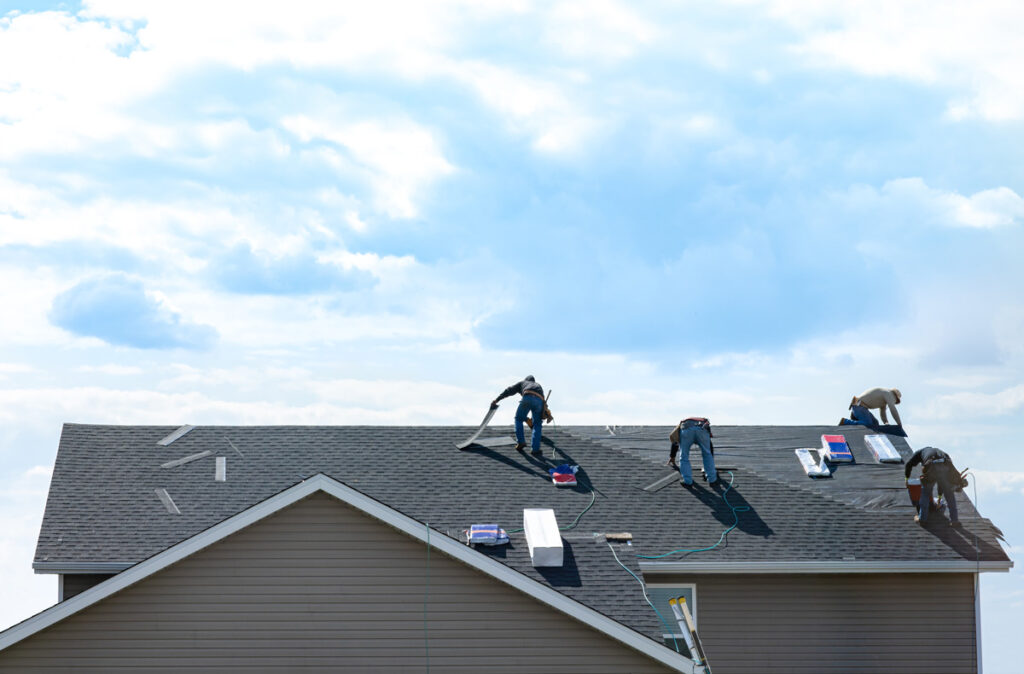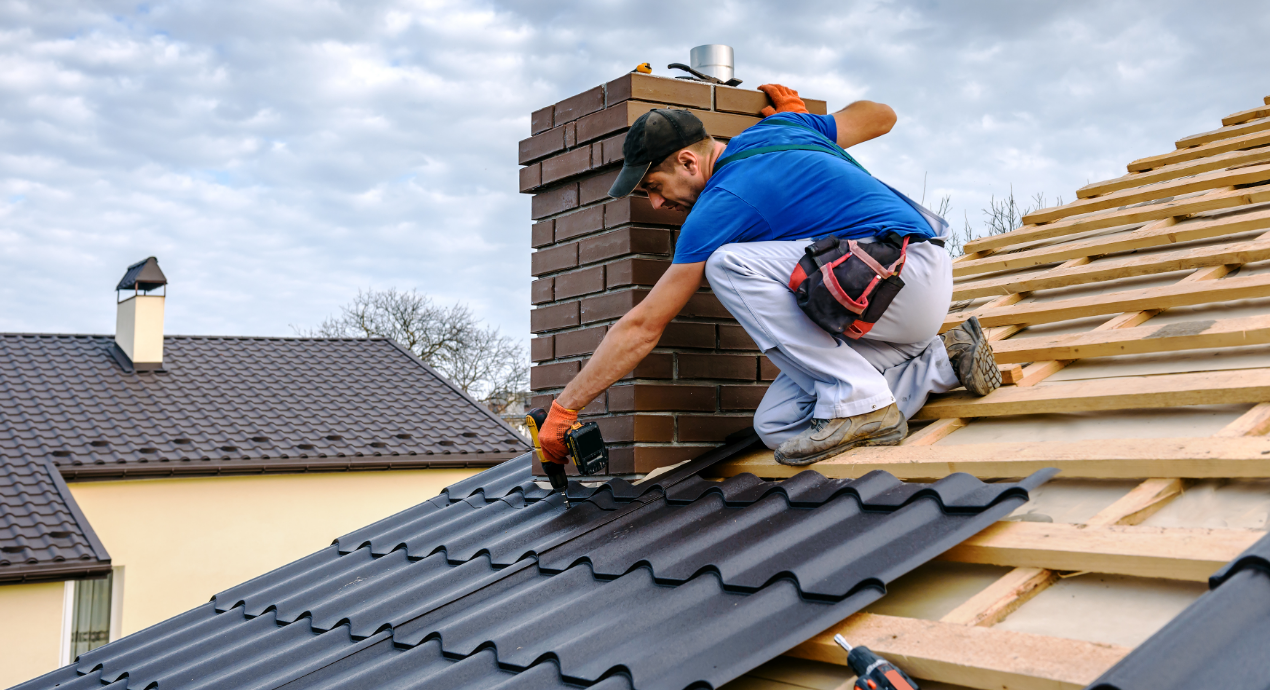Roof Repair Oahu: Quick and Affordable Roof Fixes Near You
Roof Repair Oahu: Quick and Affordable Roof Fixes Near You
Blog Article
Recognizing the Different Sorts Of Roofing Systems: A Comprehensive Overview for Homeowners
With an array of alternatives-- varying from the traditional gable to the modern level-- each type presents special advantages and challenges that need to straighten with the house owner's environmental factors to consider and particular needs. As we explore the details of numerous roof kinds, it comes to be evident that one dimension does not fit all; the right option may amaze you.
Gable Roof Coverings
Saddleback roofs, characterized by their triangular shape, are amongst the most popular roof designs due to their simpleness and performance in losing water and snow. This layout includes 2 sloping sides that meet at a ridge, enabling reliable water drainage and decreasing the risk of water accumulation. The high pitch typically related to gable roof coverings boosts their capacity to handle hefty rainfall, making them ideal for numerous climates.
In enhancement to their sensible advantages, saddleback roofs offer aesthetic flexibility. They can be adapted to various architectural styles, from standard to contemporary homes. The design can also suit added attributes such as dormer windows, which boost natural light and air flow in the attic room.
Moreover, saddleback roofs supply ample room for insulation, adding to power performance. Home owners can choose from a variety of roof covering products, including asphalt shingles, steel, and floor tiles, better boosting customization alternatives.
In spite of their benefits, saddleback roofs might require additional assistance in locations susceptible to high winds or heavy snowfall. On the whole, the gable roofing continues to be a preferred choice because of its blend of capability, longevity, and visual allure.
Flat Roofs
Level roofing systems are often identified for their minimalist layout and practical applications, specifically in industrial and commercial settings (oahu roofing). These roofings feature a virtually horizontal or straight surface, which permits easy construction and flexible space usage. While they might do not have the aesthetic appeal of pitched roofings, flat roof coverings provide numerous advantages, especially in urban atmospheres where making best use of area is essential
One of the key benefits of flat roofs is their accessibility. Property owners can use the roofing room for various objectives, such as roof yards, balconies, or solar panel installations. Furthermore, level roof coverings are typically a lot more cost-effective to mount and maintain contrasted to their sloped equivalents, as they require less products and labor.
Usual products utilized for flat roofs include built-up roof (BUR), customized bitumen, and single-ply membranes, each offering unique advantages. On the whole, flat roof coverings offer as a useful and adaptable choice for many house owners and companies alike.
Hip Roofs
Hip roofings are defined by their sloped sides that assemble at the top, developing a ridge. This layout is distinct from gable roofs, as all four sides of a hip roofing system slope downwards towards the wall surfaces, providing an extra steady structure. The angle of the inclines can vary, enabling convenience in architectural aesthetics and capability.
One of the main advantages of hip roofings is their ability to hold up against hefty winds and adverse climate condition. The sloped surface areas enable better water drain, reducing the threat of leakages and water damage. Furthermore, hip roofings offer enhanced attic area, which can be made use of for storage space and even transformed into livable areas.
However, building a hip roof can be extra costly and complicated than less complex roofing types, such as saddleback roofs. The additional product and labor entailed in creating the slopes and ensuring proper architectural honesty can lead to greater costs. Regardless of these drawbacks, several property owners prefer hip roofings for their resilience, aesthetic allure, and capacity for power effectiveness.
Mansard Roofings
Mansard roofs, frequently identified by their distinct four-sided layout, feature 2 inclines on each side, with the reduced slope being steeper than the upper. This building design, stemming from France in the 17th century, is not only aesthetically enticing yet useful, as it maximizes the useful space in the top floors of a building. The steep lower slope enables more headroom, making it an optimal choice for loft spaces or attics, which can be converted into living rooms.
Mansard roofs are defined by their adaptability, accommodating various building styles, from conventional to modern-day. They can be created with different products, including asphalt tiles, slate, or steel, giving homeowners with a variety of choices to fit their choices and budget plans. Furthermore, the design enables the combination of dormer windows, boosting natural light and air flow in the upper degrees.
Nevertheless, it is necessary to consider the potential disadvantages. Mansard roofing systems may call for even more maintenance due to the complexity of their layout, and their high inclines can be testing for snow and rainfall overflow. Generally, mansard roofings integrate style with functionality, making them a prominent selection among property owners looking for unique building functions.
Dropped Roofs
As homeowners increasingly look for simplicity and capability in their architectural designs, lost roofings have become a preferred option. Identified by a solitary sloping plane, a shed roofing system provides a minimal aesthetic that enhances numerous home styles, from contemporary to rustic.
Among the primary benefits of a shed roof is its simple building, which typically equates to decrease labor and material prices. This layout allows for reliable water drain, minimizing the danger of leakages and water damages. Additionally, the vertical slope gives sufficient space for skylights, boosting natural light within the interior.
Shed roofings likewise use flexibility in website here terms of usage. They can be effectively integrated into enhancements, garages, or outdoor structures like pavilions and sheds. Furthermore, this roofing system design can accommodate different roof covering products, consisting of metal, asphalt roof shingles, and even eco-friendly roofs, lining up with eco-friendly campaigns.
Nevertheless, it is vital to take into this article consideration regional environment problems, as hefty snow lots might demand changes to the roof covering's angle or structure. In general, lost roof coverings provide a functional and visually pleasing alternative for house owners seeking to take full advantage of performance without compromising style.
Conclusion


Gable roofing systems, identified by their triangular shape, are amongst the most popular roofing designs due to their simpleness and performance in losing water and snow. oahu roofing. The high pitch commonly linked with gable roofing systems boosts their capacity to deal with heavy rainfall, making them suitable for various climates
While they may lack the aesthetic allure of pitched roofing systems, level roofings supply many benefits, especially in metropolitan environments where maximizing room is important.

Report this page